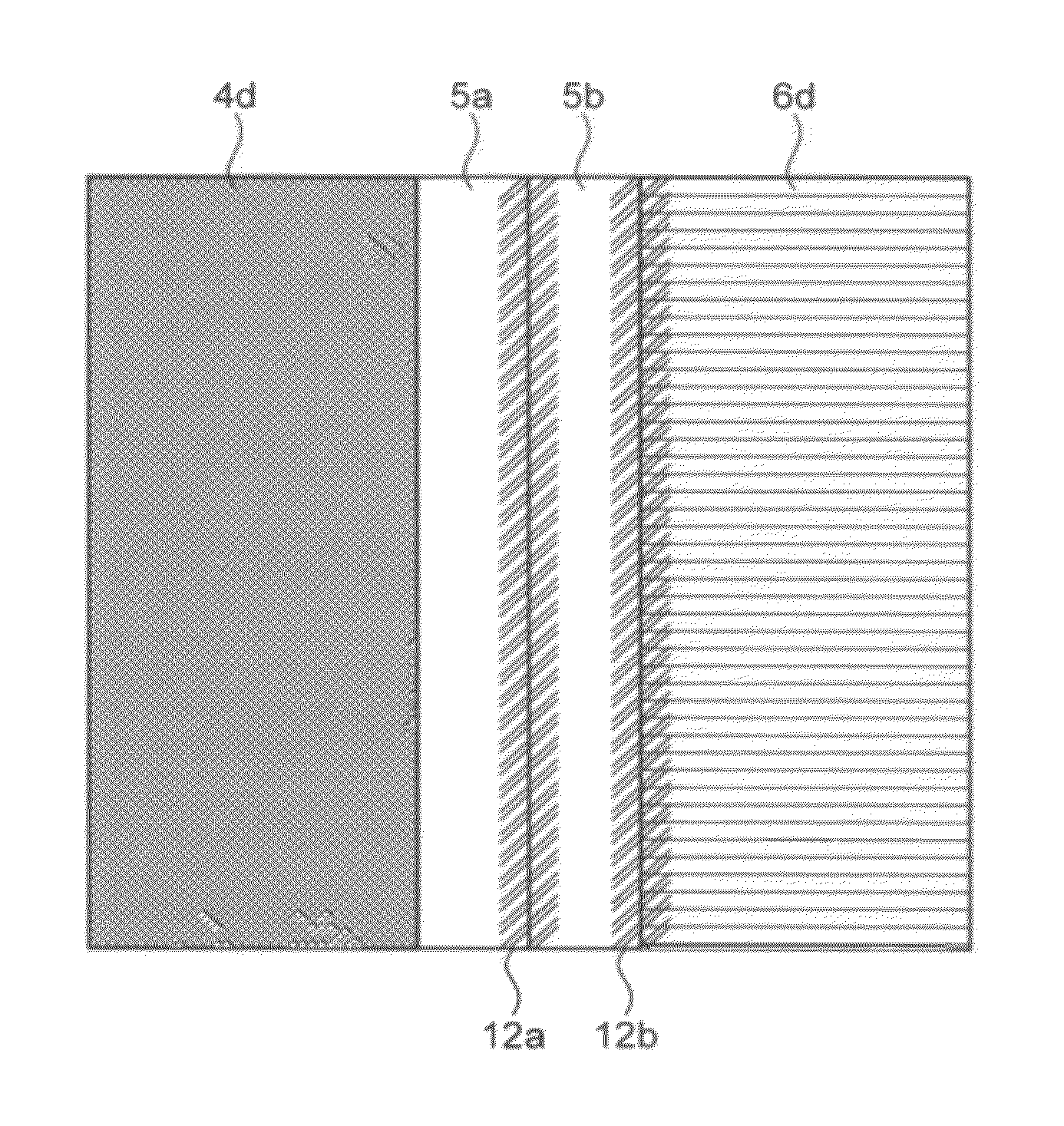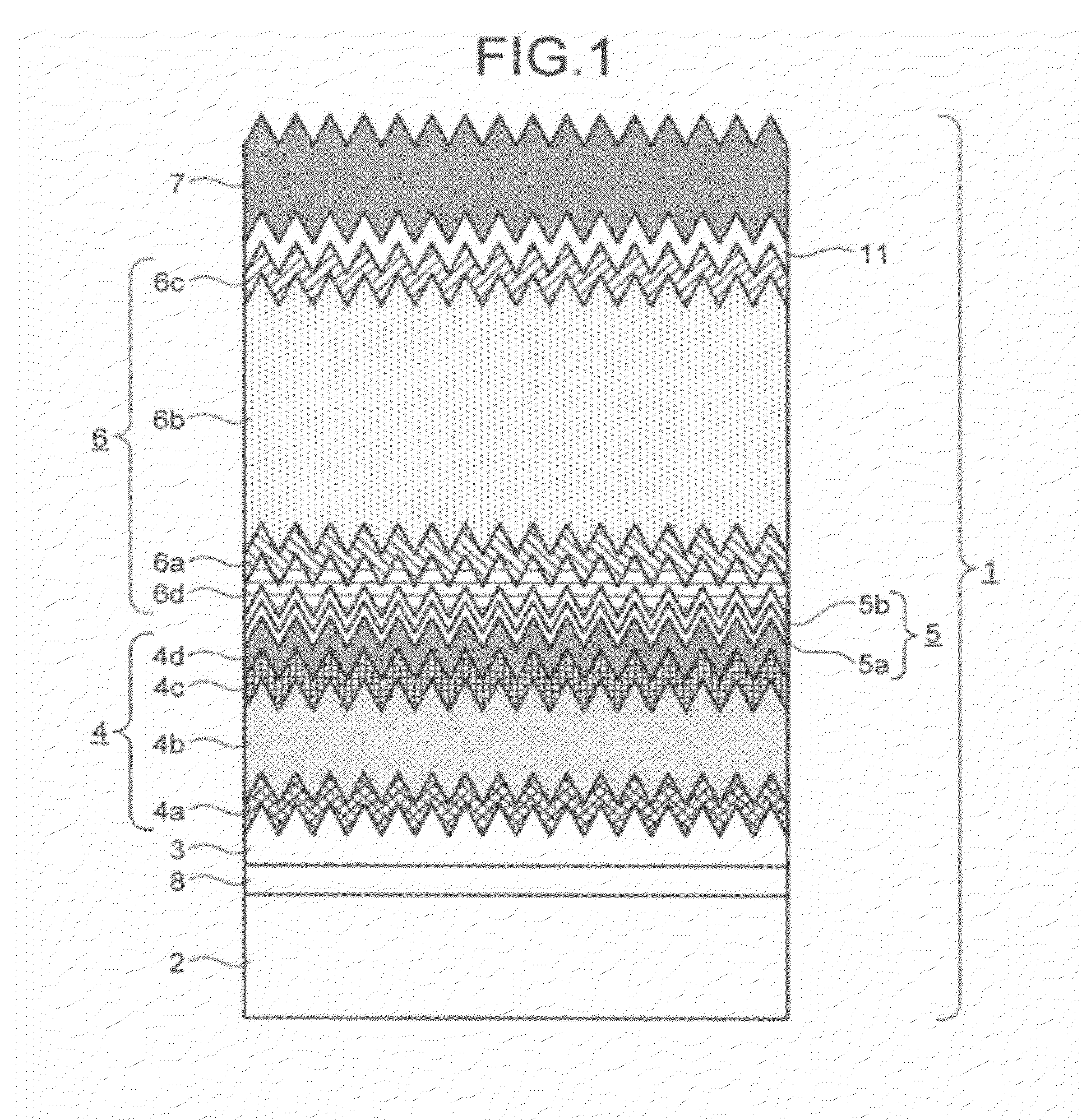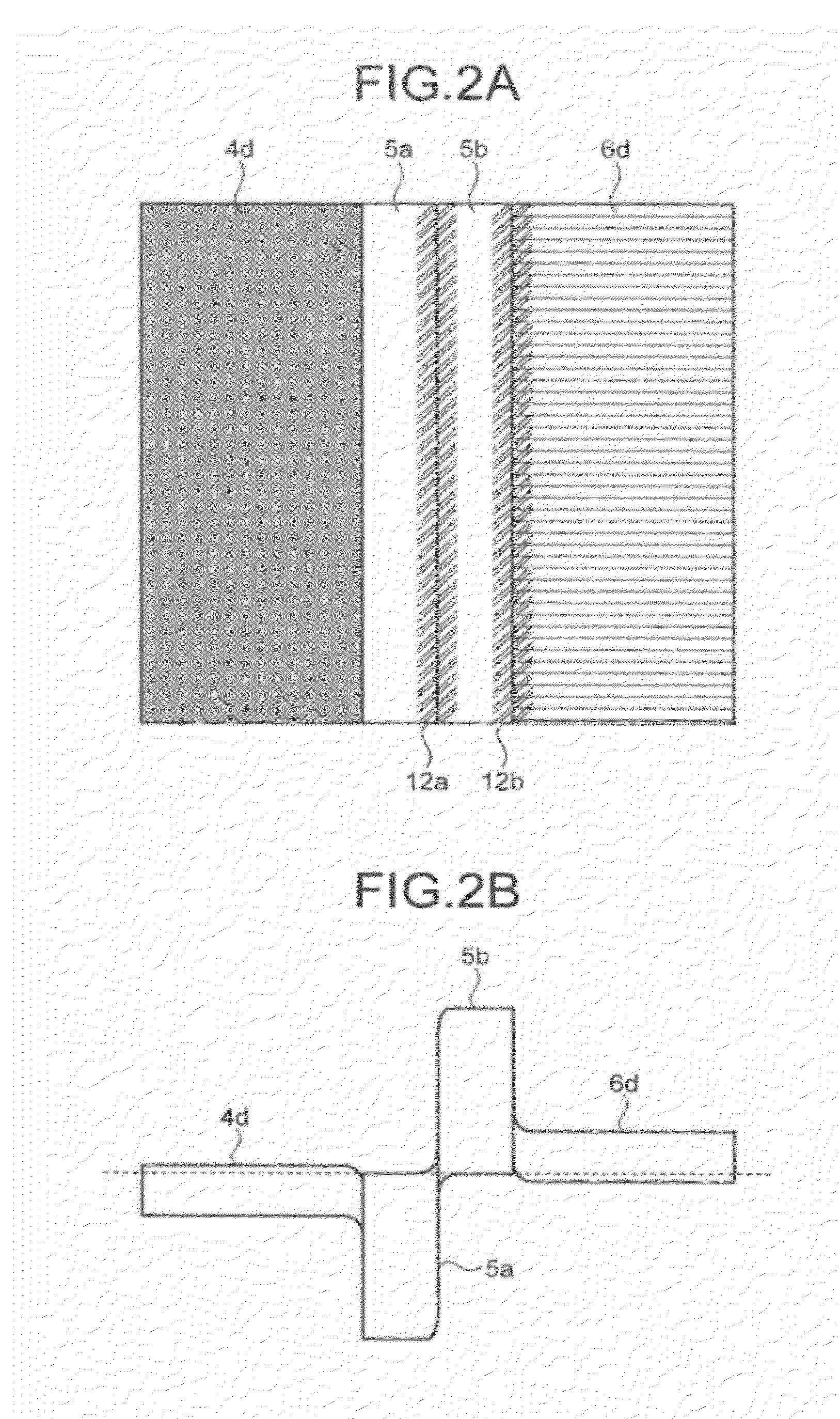Photoelectric converter and manufacturing method thereof, and photoelectric conversion module
a technology of photoelectric converter and manufacturing method, applied in the direction of photovoltaics, electrical devices, semiconductor devices, etc., can solve the problems of degrading the photoelectric conversion efficiency of the photoelectric converter, unable to achieve low resistance,
- Summary
- Abstract
- Description
- Claims
- Application Information
AI Technical Summary
Benefits of technology
Problems solved by technology
Method used
Image
Examples
first embodiment
[0017]FIG. 1 is a sectional view of a schematic configuration of a photoelectric converter according to the present invention. In FIG. 1, in a photoelectric converter 1, a transparent electrode 3 having a surface texture structure with fine irregularities, an amorphous Si photoelectric conversion layer 4, an intermediate layer 5, a microcrystalline Si photoelectric conversion layer 6, and a backside electrode 7 are sequentially stacked on a substrate 2 having insulation properties and translucency. Further, as an impurity inhibition layer, an undercoat layer 8 can be formed on the substrate 2 as required. As a material of the undercoat layer 8, a silicon oxide film can be used.
[0018]The amorphous Si photoelectric conversion layer 4 and the microcrystalline Si photoelectric conversion layer 6 include Si as the main component thereof; however, have a different bandgap due to a difference in a crystalline structure, and therefore have different light-absorbing wavelength characteristic...
second embodiment
[0062]In the intermediate layer 5 having such a configuration, an electric current flowing between the amorphous Si photoelectric conversion layer 4 and the microcrystalline Si photoelectric conversion layer 6 is determined mainly by tunneling conduction and carrier recombination. Because the Al-doped ZnO and ZnIr2O4 used for the intermediate layer 5 are transparent conductive films, the original conduction characteristic is not affected much by the film thickness. However, when high-temperature heat treatment described here is not performed after film formation, the original mobility is not always realized sufficiently. Therefore, it is preferable to have a small film thickness.
[0063]An effect of the intermediate layer 5 is explained next. A Schottky junction between an n-type Si layer and an Al-doped n-type ZnO layer (n-type ZnO:Al) has a small Schottky barrier, because respective potential positions in a conduction band (an electron affinity) are close to each other. Therefore, ...
seventh embodiment
[0094]In the formation of the intermediate layer 5 described above, in film formation of each layer near the interface between respective layers, the surface of a previous layer is exposed to film formation of the next layer in different film forming conditions. Therefore, the vicinity of the interface may be affected by film formation of the next layer to have a high resistance. Therefore, in the present invention, in the forming method of the intermediate layer 5 described above, RF power to be applied at the time of film formation of the p-type transparent conductive oxide film 5b by the RF sputtering method is changed in two or more stages.
[0095]For example, when the p-type transparent conductive oxide film 5b is to be formed on the n-type transparent conductive oxide film 5a by the RF sputtering method, the RF power to be applied is set to 50 watts at the time of film formation for 2 nanometers of film thickness close to the interface with the n-type transparent conductive oxid...
PUM
 Login to View More
Login to View More Abstract
Description
Claims
Application Information
 Login to View More
Login to View More - R&D
- Intellectual Property
- Life Sciences
- Materials
- Tech Scout
- Unparalleled Data Quality
- Higher Quality Content
- 60% Fewer Hallucinations
Browse by: Latest US Patents, China's latest patents, Technical Efficacy Thesaurus, Application Domain, Technology Topic, Popular Technical Reports.
© 2025 PatSnap. All rights reserved.Legal|Privacy policy|Modern Slavery Act Transparency Statement|Sitemap|About US| Contact US: help@patsnap.com



